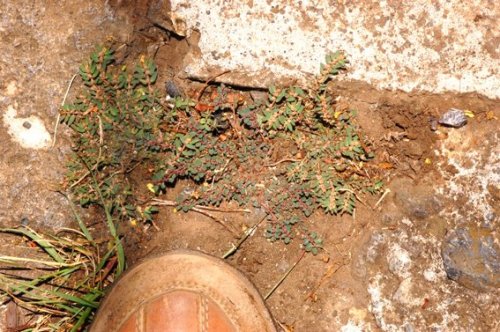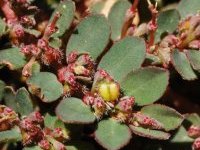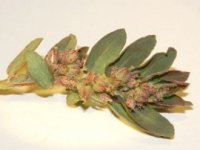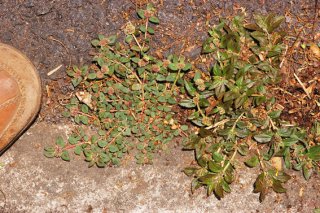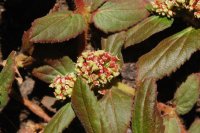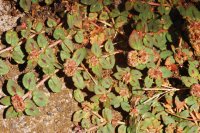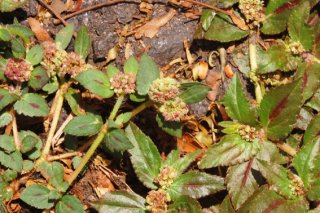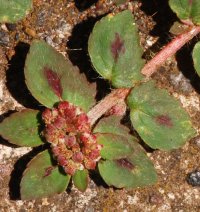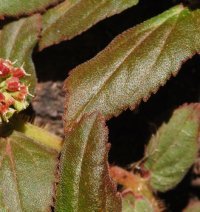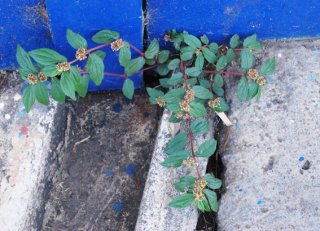 |
QUICK SEARCH
MO PROJECTS:
Africa
Asia/Pacific
Mesoamerica
North America
South America
General Taxonomy
Photo Essays
Training in Latin
America
MO RESEARCH:
Wm. L. Brown Center
Bryology
GIS
Graduate Studies
Research Experiences
for Undergraduates
Imaging Lab
Library
MBG Press
Publications
Climate Change
Catalog Fossil Plants
MO DATABASES:
W³MOST
Image Index
Rare Books
Angiosperm
Phylogeny
Res Botanica
All Databases
INFORMATION:
What's New?
People at MO
Visitor's Guide
Herbarium
Jobs & Fellowships
Symposium
Research Links
Site Map
Search
|
Draft Treatments | Guidelines | Checklist | Citing | Editors The Cutting EdgeVolume XVI, Number 2, April 2009News and Notes | Germane Literature | Season's Pick Too often we take for granted plants that are right under our noses. Growing literally underfoot, along the sidewalks of Santo Domingo de Heredia, in the administration/botany parking lot of INBio and throughout at least the Pacific portion of the Costa Rican Valle Central, is the bafflingly seldom-collected weedy herb Euphorbia prostrata Aiton (Euphorbiaceae). Here we turn our gaze to this humble herb, and some of its kin among the chamaesyceous Euphorbia. Known as Golondrinas (swallows, perhaps for the wing-shape of the paired leaves), these plants have a long history of medicinal use. Having recently informed ourselves on the taxonomy of Costa Rican Euphorbia, via review of collaborator José González's Euphorbiaceae treatment for the Manual, we turned and tuned our eyes down to discover untold diversity; four species growing right here in the parking lot at INBio. The really odd and wonderful thing is that these very species pairs (E. prostrata vs. E. thymifolia and E. ophthalmica vs. E. hirta), the first of each pair rare in collections, the second very common and widespread, are precisely the pairs that are easily confused. It turns out that much of what had been identified as E. (Chamaesyce) prostrata is actually E. thymifolia, and the humble E. prostrata is restricted to streets and sidewalks of the Central Valley area.
When growing together like this they are easily seen to be different entities, and on closer look they are vastly different.
The other two species, side by side seem different, but just how different is not immediately obvious. At the level of cyathia and fruits, they are virtually identical, both having more or less pedunculate, dense heads of cyathia, and stipitate, pubescent fruits. It can take some time to convince oneself that E. ophthalmica is not just trodden and depauperate E. hirta.
The red midrib spot, usually present in E. ophthalmica is not definitive because it can also occur in E. hirta. The really constant differences between these two species, other than the ghestalt of leaf shape, color and reflective qualities, are that the former has only terminal inflorescences while the latter has them axillary and terminal.
|
|||||||||
© 1995-2025 Missouri Botanical Garden, All Rights Reserved
4344 Shaw Blvd.
St. Louis, MO 63110
(314) 577-5100
Technical Support

